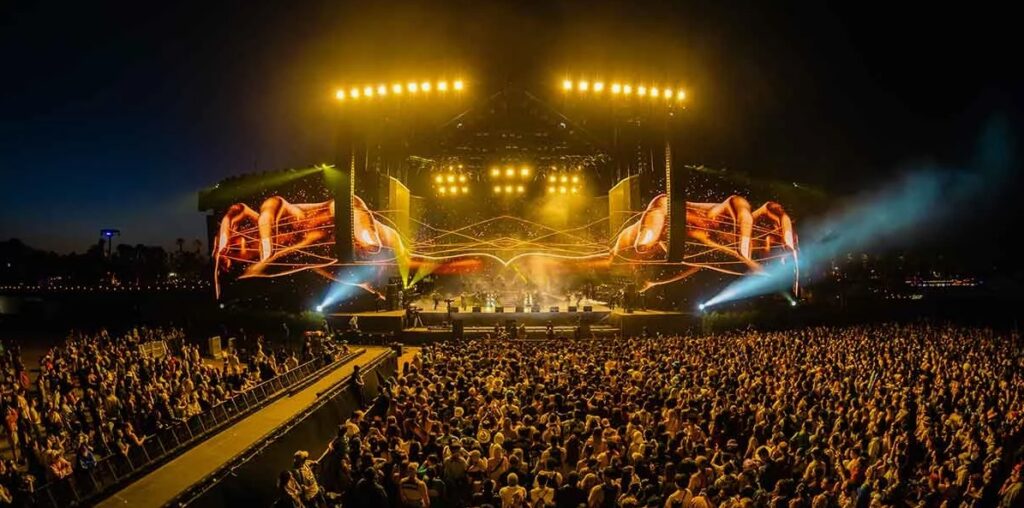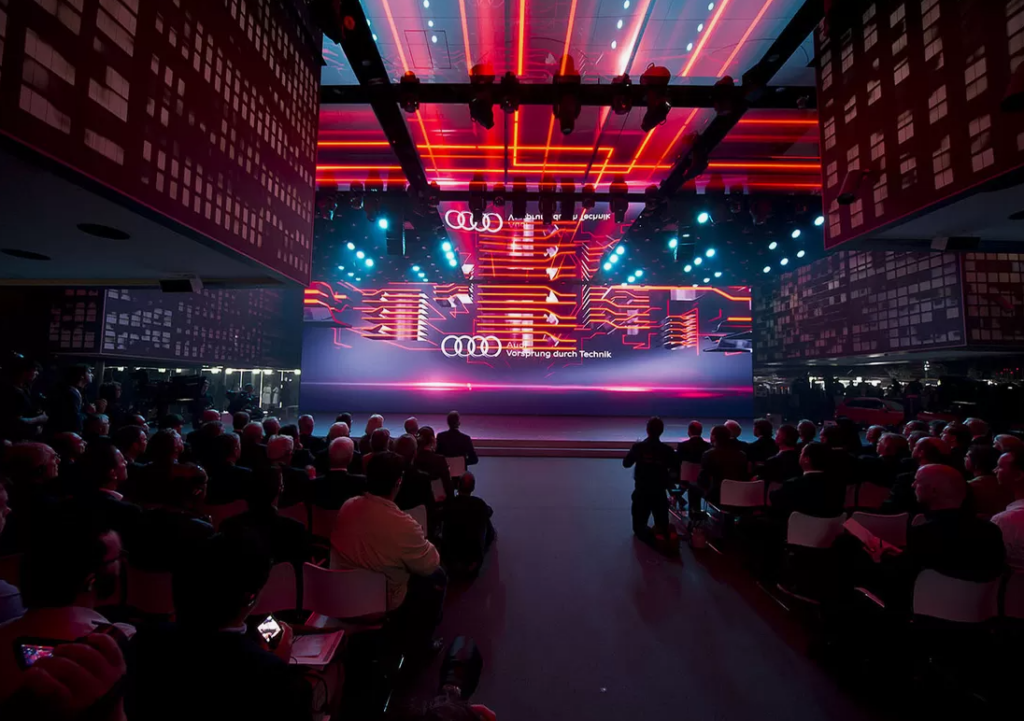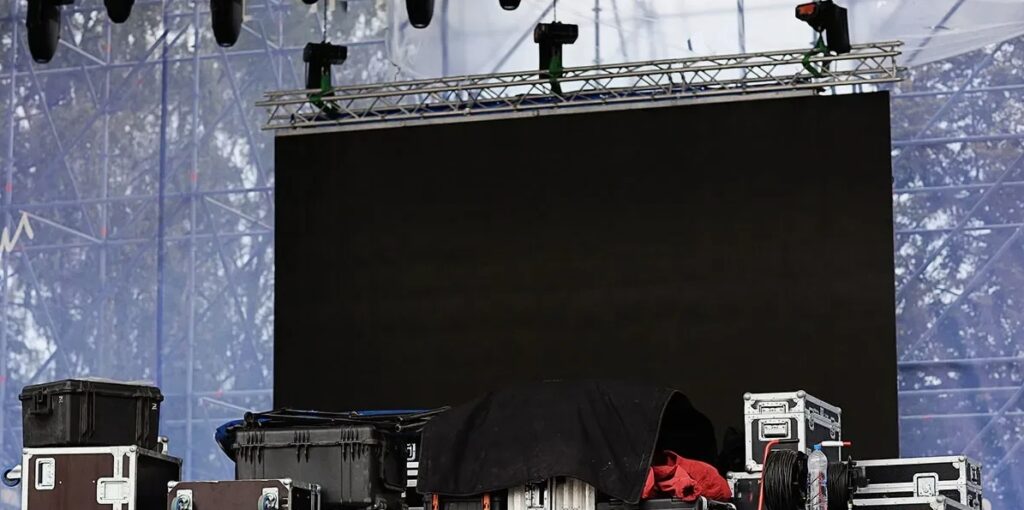The Ultimate Guide to Renting and Installing Giant LED Screens
Table of Contents
A. Demand Analysis: Defining Core Activity Requirements
B. Equipment Selection: 5 Key Parameters and Traps to Avoid
C. Budget Planning: Cost Breakdown and Money-Saving Secrets
D. Installation Process: From Site Inspection to Safety Acceptance
E. Risk Management: 3 Common Problems and Solutions
F. Future Trends: Technological Innovations to Improve Rental Efficiency
G. Conclusion
Whether it’s a music festival, a sports event, a brand launch, or an international summit, giant LED screens have become the “soul” of large-scale events. However, every stage, from choosing the equipment to the on-site installation, can have a significant impact on the final effect and event safety. Based on industry experience and practical cases, this guide provides you with a step-by-step overview of the entire process of LED screen renting and installation.

A. Demand Analysis: Defining Core Activity Requirements
The event type determines the screen functions:
- Concerts/Music Festivals: High refresh rate (≥3840Hz), wide viewing angle (≥160°), and support for HDR.
- Sports Events: Ultra-wide screen splicing (16:9 or 21:9), with real-time score synchronization.
- Business Conferences: 4K resolution, low brightness (300-800 nits), and an eye protection mode.
Case: The main stage of the Coachella Music Festival in 2023 used a P4.8 curved LED screen with an area of over 2000 square meters. Combined with a 360° surround sound system, it increased the audience’s immersion by 70%. (Providing you with a comprehensive guide to curved LED displays!)

Environmental factors affect the selection:
- Outdoor Events: Require an IP65 protection rating and a brightness of ≥5000 nits.
- Indoor Events: Choose small-pitch screens (P2.5-P3.9) and designs with low power consumption and quiet operation. (Analyzing the 6 major differences between indoor and outdoor LED rentals for you.)
- Extreme Weather: Desert events require high-temperature resistance (-30°C to 70°C), while coastal events need protection against salt spray corrosion.
B. Equipment Selection: 5 Key Parameters and Traps to Avoid
- Pixel Pitch and Viewing Distance
| Pixel Pitch | Optimal Viewing Distance | Applicable Scenarios |
| P2.5 | ≥2.5 meters | High-level conferences, theaters |
| P4.8 | 5-20 meters | Concerts, stadiums |
| P10 | ≥20 meters | Outdoor advertising, large-scale celebrations |
Tip: Don’t blindly pursue small-pitch screens. For long-distance scenarios, a P6 screen or above is sufficient, which can reduce costs.
- Brightness and Contrast
- Indoor: 800-1500 nits
- Outdoor: 5000-10000 nits
- Contrast ratio: ≥5000:1 to ensure clear details in dark areas
- Refresh Rate and Grayscale
- For concert live broadcasts: ≥3840Hz to prevent screen tearing.
- Grayscale: 16 bits or higher to reduce color banding.
- Power Supply and Heat Management
- Redundant power supply: Dual power supply backup can prevent single-point failures.
- Quiet cooling: The noise level of indoor screens should be ≤30dB.
- Special Requirements for Rental Screens
- Quick installation: Modular design, supporting front/rear maintenance.
- Lightweight design: The panel weight is ≤25kg/square meter.
C. Budget Planning: Cost Breakdown and Money-Saving Secrets
| Item | Portion | Description |
| Equipment Rental Fee | 50%-60% | Charged per square meter per day; the average cost of P4.8 is $30-50 per square meter per day |
| Transportation and Insurance | 15%-20% | International events may incur tariffs and taxes |
| Installation and Dismantling Labor | 10%-15% | Requires a certified high-altitude operation team |
| Content Creation | 5%-10% | The cost of 4K video production is 5,000 to 20,000 per minute |
Case Analysis: A multinational car launch event rented a 500-square-meter P3.9 screen, and the total cost was approximately $50,000 (including installation for a 7-day rental).

Money-Saving Tips
- Rent during the off-season: Prices drop by 20%-30% during non-peak seasons.
- Integrated services: Choose integrated suppliers that offer “equipment + installation + content” packages (such as SoStron).
- Modular reuse: The screen can be disassembled for use in smaller events.
D. Installation Process: From Site Inspection to Safety Acceptance
- On-site Inspection (30 days before the event)
- Load-bearing test: The ground or roof load-bearing should be ≥500kg/square meter (steel structures require additional reinforcement).
- Power supply planning: Each 100-square-meter screen requires a dedicated 380V, 100kW three-phase power supply.
- Installation (3-7 days before the event)
- Frame setup: Aluminum truss or steel structure, with an error of ≤2mm per 10 meters.
- Screen assembly: Start from the center and calibrate for uniform color.
- System debugging: Use optical fibers for signal transmission testing and install a backup processor.
Case: The 2024 Paris Olympics used 8000 square meters of LED floor tiles, and the pressure test and dynamic calibration were completed within 72 hours.

- Safety Acceptance Standards
- Structural safety: Wind resistance level ≥ Grade 8 (outdoor), and the seismic resistance level meets the ANSI standard.
- Electrical safety: Grounding resistance ≤4Ω, and the leakage protection response time ≤0.1 second.
- Display quality: No dead pixels (≤3 per square meter), and the color deviation ΔE≤3.
E. Risk Management: 3 Common Problems and Solutions
- Weather Changes
- Solution: Equip outdoor screens with rain covers and emergency power-off systems.
- Case: At the 2023 Chengdu Music Festival, the IP67-rated screen still operated perfectly in heavy rain.
- Signal Interruption
- Solution: Implement redundant processors with 5G backup (e.g., NovaStar VX1000).
- Copyright Disputes
- Solution: Use authorized content from platforms such as Shutterstock or Getty Images.
F. Future Trends: Technological Innovations to Improve Rental Efficiency
- Flexible Screens: Curved and rollable screens like the LG 65R9 can be installed within 3 hours.
- XR Virtual Production: LED screens combined with virtual engines (such as the Disguise system) create immersive mixed reality stages, like Taylor Swift’s “Eras Tour”.
- Environmental Solutions: Solar-powered screens reduce the carbon footprint of events.
G. Conclusion
Renting and installing giant LED screens is a comprehensive process that combines technology, artistry, and risk management. By choosing the right equipment, carefully planning the budget, and executing precisely, companies can create stunning visual experiences while effectively controlling costs and reducing risks. Whether it’s a concert for thousands of people or a globally broadcast business summit, a well-planned LED screen setup will exponentially amplify the impact of your event.
.png)

Leave a Reply